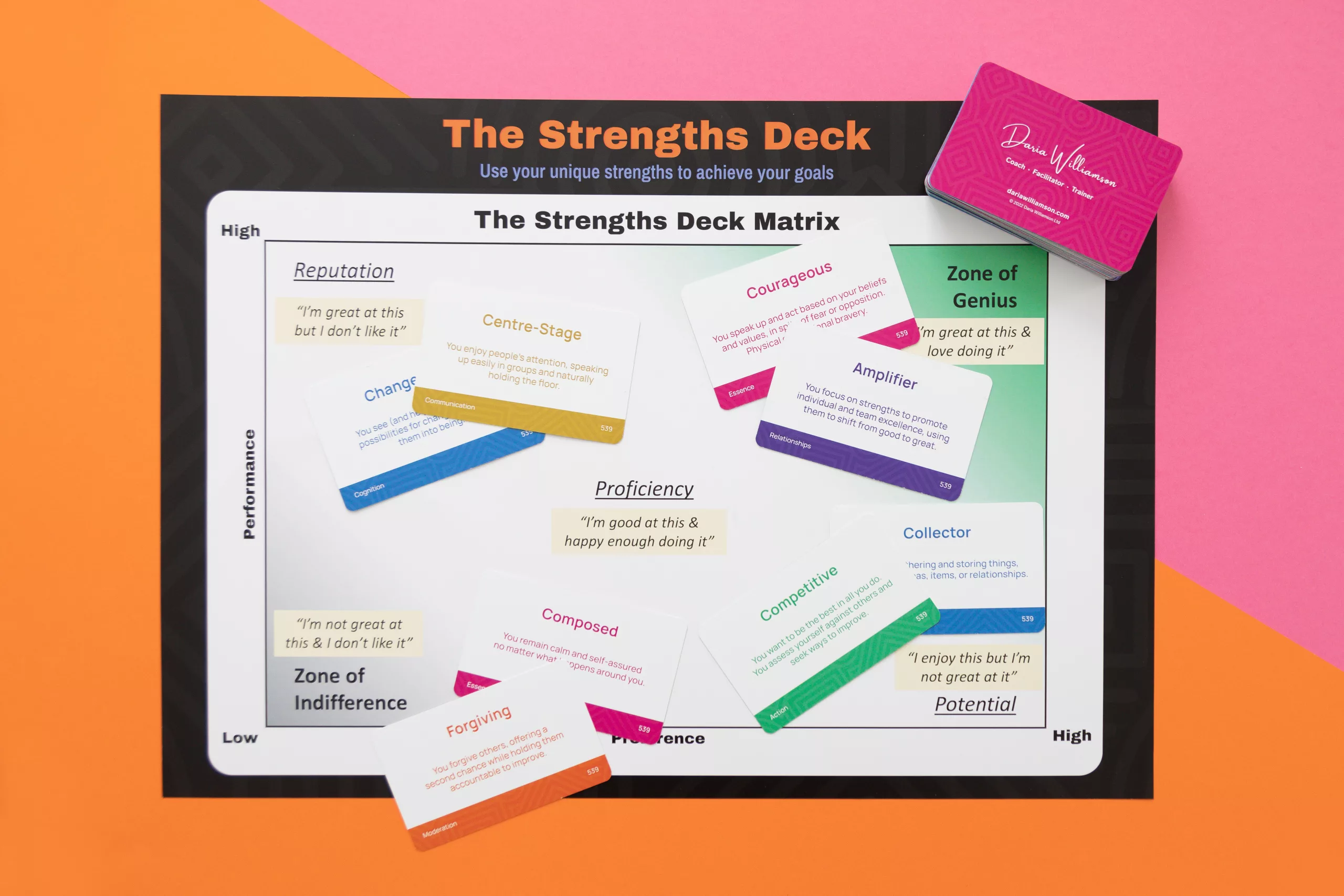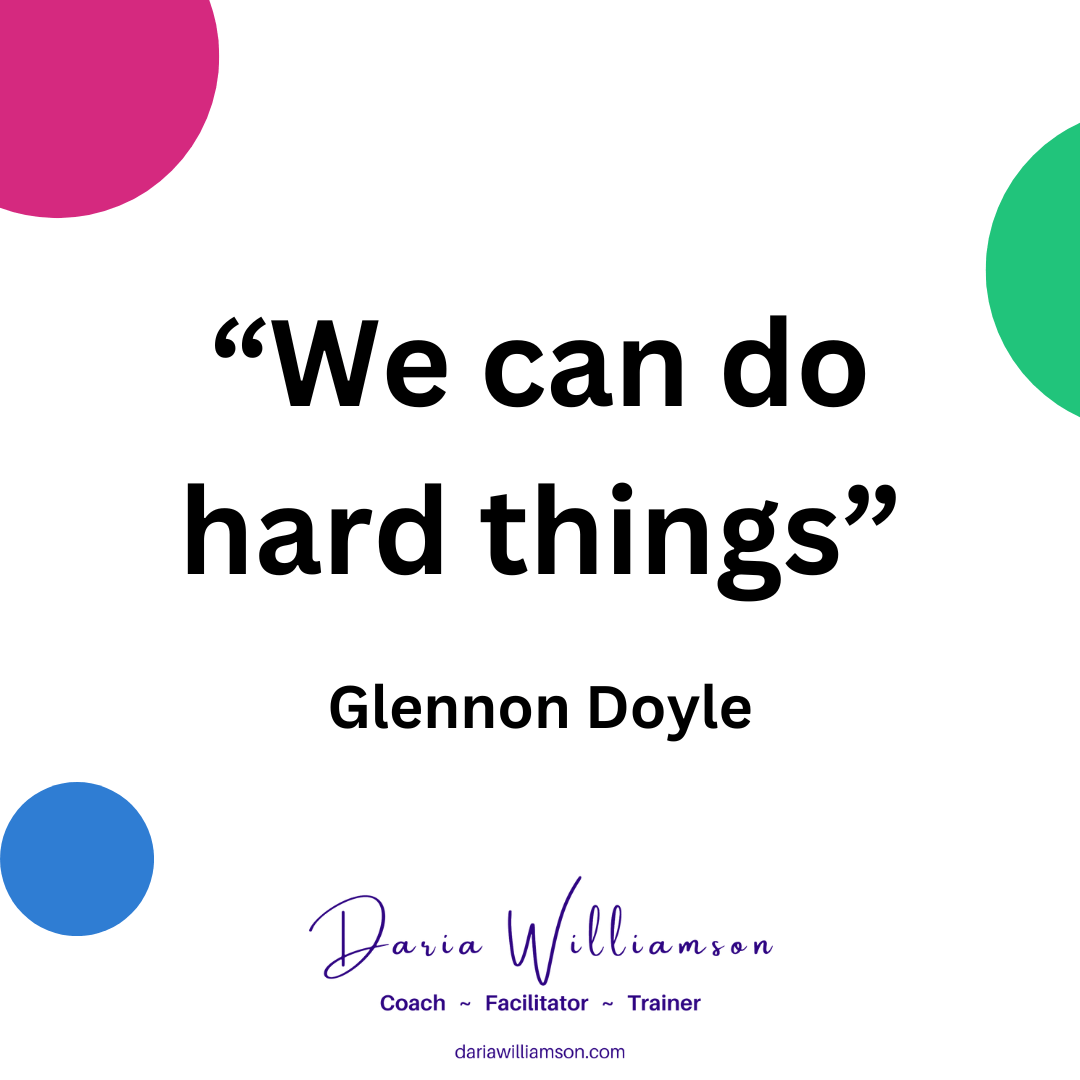The key to getting the most out of working with your strengths is knowing how to find the sweet spot for each strength.
This article will teach you five simple strategies for finding your sweet spot, so that you can enjoy better results.
A quick strengths primer
If you aren’t familiar with how I define strengths, here’s a quick rundown.
A strength is:
- Something you are great at
- That lights you up when you use it
This isn’t about enjoying the results of using your strength, it’s about enjoying the process. For example, it’s not about getting a buzz from the standing ovation at the end of your speech, it’s about enjoying connecting with, informing and entertaining your audience as you’re talking.
Why more isn't always better
When you love something, more is always better, right? Except that we all have an upper limit, even for things we really love. I adore stir-fried chilli garlic prawns and salad for dinner, and would happily eat it a couple of nights a week – for about a month.
Because after a while, I’d feel a little less excited about my prawns, not to mention that by having them so often, I’d have less opportunity for other meals I enjoy, like lasagne, roast chicken, green curry, fish and chips, steak, Caeser salad, rogan josh, grilled salmon, hamburgers… you get the point! My “sweet spot” for prawns is once or twice a month in summer, and once every couple of months in winter.
The same philosophy works for your strengths. While you can absolutely love a particular strength, if you don’t know how to find and operate in the sweet spot with it, you can lose some of the benefits of working with that strength.
Defining the sweet spot
If you’ve ever played a sport like cricket, tennis, softball or squash, you’ll probably have had the experience of hitting the ball with the sweet spot of the bat or racquet. You connect at just the right moment, with the right amount of swing, and the ball goes soaring off as though it has been hit by a giant.
To hit the ball a very long distance, you either need to put in huge amounts of effort, or hit it with the racquet’s or bat’s sweet spot. When you hit the sweet spot, the energy you put in is focused and multiplied, increasing your performance with no extra effort on your part. And, once you know how to find the sweet spot of each strength, you can significantly boost your performance and results without having to work harder.
The strengths "sweet spot"
The traditional view of strengths is that, because you are good at them, you should use them all the time. After all, what could be better than doubling-down on what you’re already brilliant at?
Most of the time, you will experience more benefits than costs when you regularly use your key strengths. However, there are situations in which relying too much on particular strengths can actually backfire, reducing your performance, not enhancing it. And regular over-use of a strength can also cause trouble with other people, either because they become annoyed that you’re a “one trick pony” or because they’re not getting an opportunity to use their key strengths.
Strengths aren’t fixed, they are dynamic. That means you can decide how and when to apply them, and how intensely you use them. And, over time, you’ll start to learn when it works better to dial up a strength, and when it makes more sense to ease off and use a different strength.
This is finding the “sweet spot” of your strengths – the only difference between strengths and sports is that each strength has multiple sweet spots, depending on the situations you find yourself in.
An example: Humour
A perfect example of the importance of finding the sweet spot of your strength use is Humour.
In almost every situation, a little bit (or a lot) of humour can make things better. You can put people at ease in unfamiliar situations. You can help bump someone out of a funk. You can shift people’s perspectives on an issue. You can break tension so that a deeper conversation can take place.
Being funny at a funeral
You can even use humour at funerals – but you have to pick the right one and the right moment. There are some funerals where it would never be OK to use humour – doing so would cause others more grief. And there are other funerals where humour is all but mandatory – it just wouldn’t be right to sit there, po-faced – it would be an insult to the person whose life you are celebrating. And then there are the funerals where the service itself might be quite contained, but at the wake, in a group, you can tell a story with an amusing spin that gives others space to share their thoughts and feelings too.
Humour's upper limit
And there is an upper limit to how often you can use Humour. Imagine having a friend who always turns everything into a joke. It’s all fun and games until you lose a job or a loved one. All of a sudden, Crack-up Chris is the last person you want to see – because you know how you’re feeling won’t be taken seriously.
But, if Chris learns how to find the sweet spot of his/her use of Humour, s/he can give you a giggle when you’re having fun and meet your down days with empathy.
Finding the sweet spot for your strengths
There are several ways that you can find the sweet spot for your strengths. Remember, because each situation you encounter is subtly or wildly different, the sweet spot for each strength will vary across various situations.
Here are some simple strategies to find your strengths sweet spot:
- Find different ways to apply the same strength
- Increase your use of the strength
- Decrease your use of the strength
- Ask for feedback from others
- Pair the strength with another strength
- Pair a strength with a weakness
Of course, you need to know what your strengths, weaknesses, and everything in-between are. I created The Strengths Deck to help you figure that you – find out more information on The Strengths Deck website.
1. Find different ways to apply the same strength
Every strength can be applied in multiple ways. The Centre-Stage strength doesn’t mean you have to be on a stage to be using it – you might speak up in your work team, speak out at a protest, or rally your friend group.
Brainstorm different ways to use your key strength. Then try out some of the alternatives, especially if they are ways you wouldn’t normally apply that strength. You might be surprised at what you find out.
2. Increase your use of the strength
You can easily get into a habit of how you use your strength – this strategy asks you to intensify or increase your use of it.
If Empathetic is one of your strengths, look for ways to dial up you use of it – either frequency or intensity. So, you could look for ways to express empathy more often (to people or groups you wouldn’t normally do so), or more intensely (where you might previously only have felt empathy for someone, you might try expressing it directly to them).
3. Decrease your use of the strength
This one often feels counter-intuitive, because of our built-in bias that more is always better. In this strategy, you’re deliberately going to use your strength less – in frequency, intensity or both.
Doing this gives your other strengths a chance to shine, and also makes room for those around you to use their strengths.
This isn’t about totally switching the strength off, or doing the exact opposite of it. For example, if you have a Leadership strength, it doesn’t mean that you flounce off to eat popcorn! But you might just stay quiet an extra few seconds, to see who else will step up. Or, you invite others to share their ideas and try their hand at leading something. You’re not abdicating your role, you’re giving others breathing room.
4. Ask for feedback from others
You know the old saying, “Can’t see the wood for the trees”? We are always up close and personal with our strengths, so we don’t always have a balanced perspective on how our strengths use is playing out.
The people you spend the most time with will have a pretty decent idea of your strengths and weaknesses, and how they’re showing up in your life. And most of them will probably be happy to chat with you about what they see.
5. Pair the strength with another strength
While we talk about strengths separately, in truth, we don’t usually use them in isolation. Think about which of your strengths are complementary (that is, they work together to make tasks even easier and more enjoyable).
Then, look for ways to apply this strengths combination. For example, if Welcoming and Planning are in your Zone of Genius, perhaps you could put your hand up at work to help out with the induction of new staff, not only making them feel at home, but also ensuring that they meet everyone they need to, and have everything they need on Day One.
6. Pair a strength with a weakness
Just because you have a weakness doesn’t mean you have a fatal flaw, or aren’t going to be able to produce great results. When you find yourself in a situation where you have to use a weakness, look for a compensatory strength (one that helps “fill in the gaps” of the weakness).
For example, if you have Meticulous (attention to detail) as a weakness, look at what’s in your Zone of Genius. Maybe you have Quality (putting excellent work into the world) which will encourage you to stick with the detail until it’s good enough. Perhaps you have Competitive (checking your performance and looking for ways to improve) which will help you to experiment with better ways to focus on the detail. Or you could have Systematiser (creating order, structure, and systems) which will help you create a process that will help you get the details right.
Whatever you do, run experiments
I feel like a broken record, but it’s vital to take the approach that everything is an experiment.
Nothing is guaranteed to work in every situation, all the time, for everyone. Some of these techniques will work brilliantly for you, others might fizzle, and one that usually works reliably may suddenly stop working.
Any time that you get a result that you don’t expect, or isn’t what you’d hoped, remind yourself to view the results as data. They are not a commentary on your ability to work with your strengths, or your overall worth as a person!
Keep experimenting, tweaking, and polishing your approach. And if you need some guidance, I’d love to chat. Connect with me on LinkedIn, Facebook, or Instagram, or send me an email.
Any discussion of personal strengths would be incomplete without me letting you know about The Strengths Deck.
I created it to put the power of strengths in your hands. If you want to learn about your unique strengths fingerprint and how to make the most of your amazing strengths, click the logo to find out more, or make a booking for your free, 30-minute call to talk about how we can get your strengths working for you.






